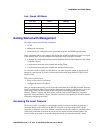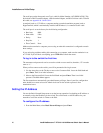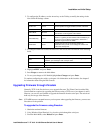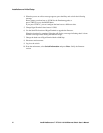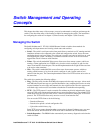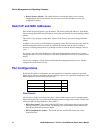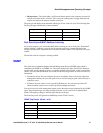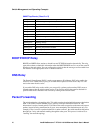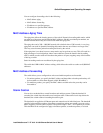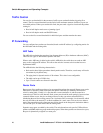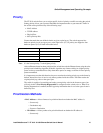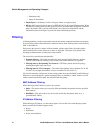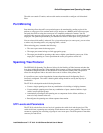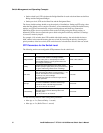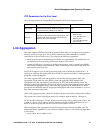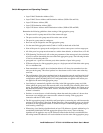Intel® NetStructure™ ZT 8101 10/100 Ethernet Switch User’s Manual 27
Switch Management and Operating Concepts
You can configure forwarding rules for the following:
• MAC address aging
• MAC address forwarding
• IP address to a specified gateway
• IP address to a specified MAC address
MAC Address Aging Time
The aging time affects the learning process of the switch. Dynamic forwarding table entries, which
are made up of the source and destination MAC addresses and their associated port numbers, are
deleted from the table if they are not accessed within the aging time.
The aging time can be 300—1,000,000 seconds with a default value of 300 seconds. A very long
aging time can result in dynamic forwarding table entries that are out-of-date or no longer exist.
This may cause incorrect packet forwarding decisions by the switch.
If the aging time is too short, however, many entries may be aged out too soon. This will result in a
high percentage of received packets whose source addresses cannot be found in the forwarding
table, in which case the switch will broadcast the packet to all ports, negating many of the benefits
of having a switch.
Static forwarding entries are not affected by the aging time.
The switch has 8 KB for MAC address caching, which allows the switch to cache over 8,000 MAC
addresses.
MAC Address Forwarding
The switch allows you to configure how unicast and multicast packets are forwarded.
• For unicast packets, you specify the MAC address and then either select the port that they will
be forwarded to or have them dropped (called “BlackHole”).
• For multicast packets, you specify the MAC address and then select the ports they can be
forwarded to.
Storm Control
You can also set thresholds to control broadcast and multicast storms. When the threshold is
exceeded, the switch drops the multicast or broadcast traffic. When traffic levels drop below the
threshold, the switch resumes forwarding the traffic again.
The thresholds are applied to all Ethernet ports and cannot be set for individual ports. The threshold
specifies in thousands the number of broadcast or multicast packets per second a port can receive
before triggering a storm control response. The possible range is 0 K— 255 K packets per second.
This threshold can be configured to apply to broadcast packets, to multicast packets, or to both.



